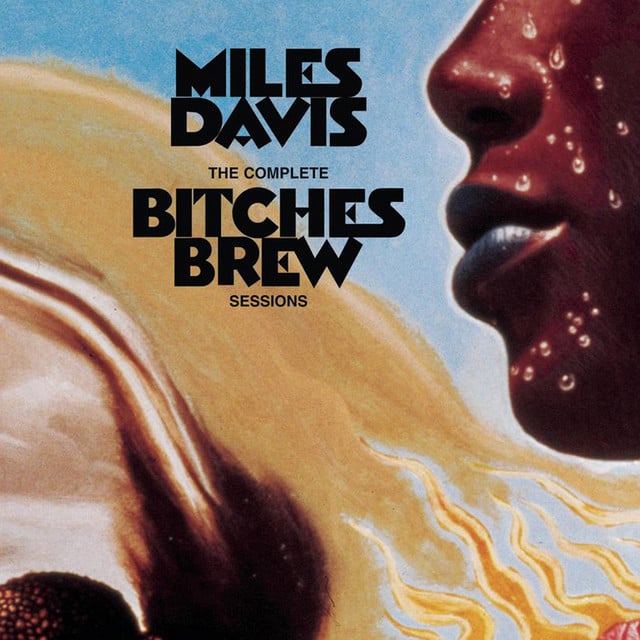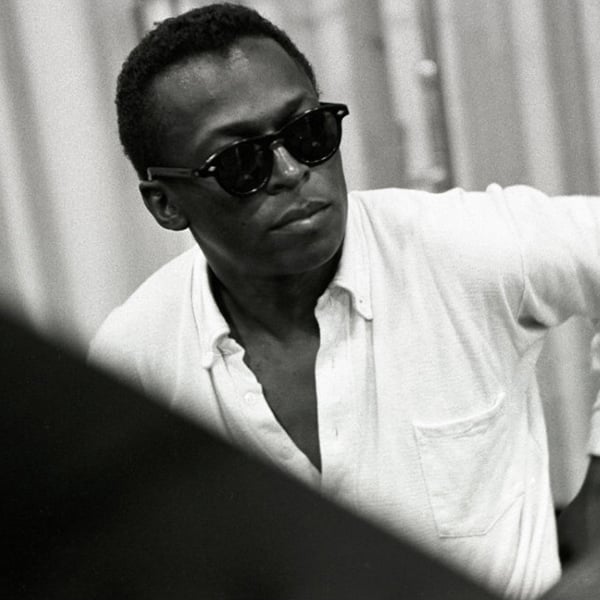
In November 1969, Miles Davis’ producer Teo Macero sent a memo to a higher-up at Columbia Records with one request. “Miles just called and said he wants this album to be titled: BITCHES BREW. Please advise.”
Bitches Brew was Miles’ era-defining double album and surprise popular hit, filled with swirling, extended jams and kaleidoscopic mix of acoustic and electric instruments, snaky groove rhythms and loud rock power. For many jazz fans, it had a scary, confrontational vibe. It was divisive and still is; some go for it, others back away. But in March 1970 when the album was released, the music community—even Miles’ own producer—were simply stunned, and the title was just part of it.
Columbia Records ultimately believed in what Miles was doing, accepting the name he chose for it, agreeing to an Afro-futurist cover image (painted by German artist Mati Klarwein), releasing it as a double-LP (his first), and actively promoting it to a new, youthful audience. The investment paid off: Bitches Brew sold more than 100,000 units, an unheard of number for a jazz musician.
Miles’ leap from one side of the great generational divide to the other had happened so quickly. He had gone from ties and Italian suits to loud, patterned shirts and leather trousers. From playing onstage with an acoustic quintet blowing familiar ballads, to a rock-jazz band with long hair making loud, electronic sounds that felt like shapeless jams—all in two short years. Bitches Brew was Miles’ last, determined leap from one era to another, and no turning back.
Musically, Bitches Brew is the confluence of multiple priorities. It is series of studio experiments with different double-quintet lineups—an idea Ornette Coleman and John Coltrane also created recordings around in the 1960s. But Miles added in new, plugged-in instrumentation like a Fender Rhodes, an electric bass, and a processed trumpet. Another idea was the rhythmic focus—drawing on R&B and rock feel, letting that carry the power of the tunes. There were the compositions: loose, fractured constructions that moved from one mesmerizing moment to another, the result of splicing together parts of different performances. Some are smooth to the ear, other transitions obvious and jarring.
The musical details captivate and surprise: a liberal use of echo, reverb, and other studio effects. Dissonant passages with a sense of menace. There’s Miles’ trumpet blast sounding like an alarm on the title track, and his fanfare opening to “Spanish Key.” On “Pharoah’s Dance,” there are Wayne Shorter’s searing soprano solo, Bennie Maupin’s moaning, bass clarinet parts, and Joe Zawinul’s aggressive comping on electric piano. John McLaughlin’s slashing guitar riffs on—of course—“John McLaughlin.” The percussion team of Jack DeJohnette, Lenny White, and Don Alias on “Miles Chases the Voodoo Down.” The yelp of the cuica in Brazilian percussionist Airto Moreira’s hands on “Felo,” and the sneaky electric bass lines played by Harvey Brooks.
Herbie Hancock, Chick Corea and Dave Holland were on Bitches Brew as well. Miles was proud of the jazz musicians he had assembled; “The greatest rock band of all time,” he called them, knowing the confusion he was causing. He also was well aware of the prevailing rock, soul and R&B stars of the day, and not hiding where he was getting his ideas and inspiration. But here’s something to consider: at the end of the 1960s, millions of people were also listening to Jimi Hendrix, Sly Stone, James Brown. Some were even checking out electronic composer Karlheinz Stockhausen. But there was only one musician who filtered all of that and came up with Bitches Brew—and changed the world with it.












































